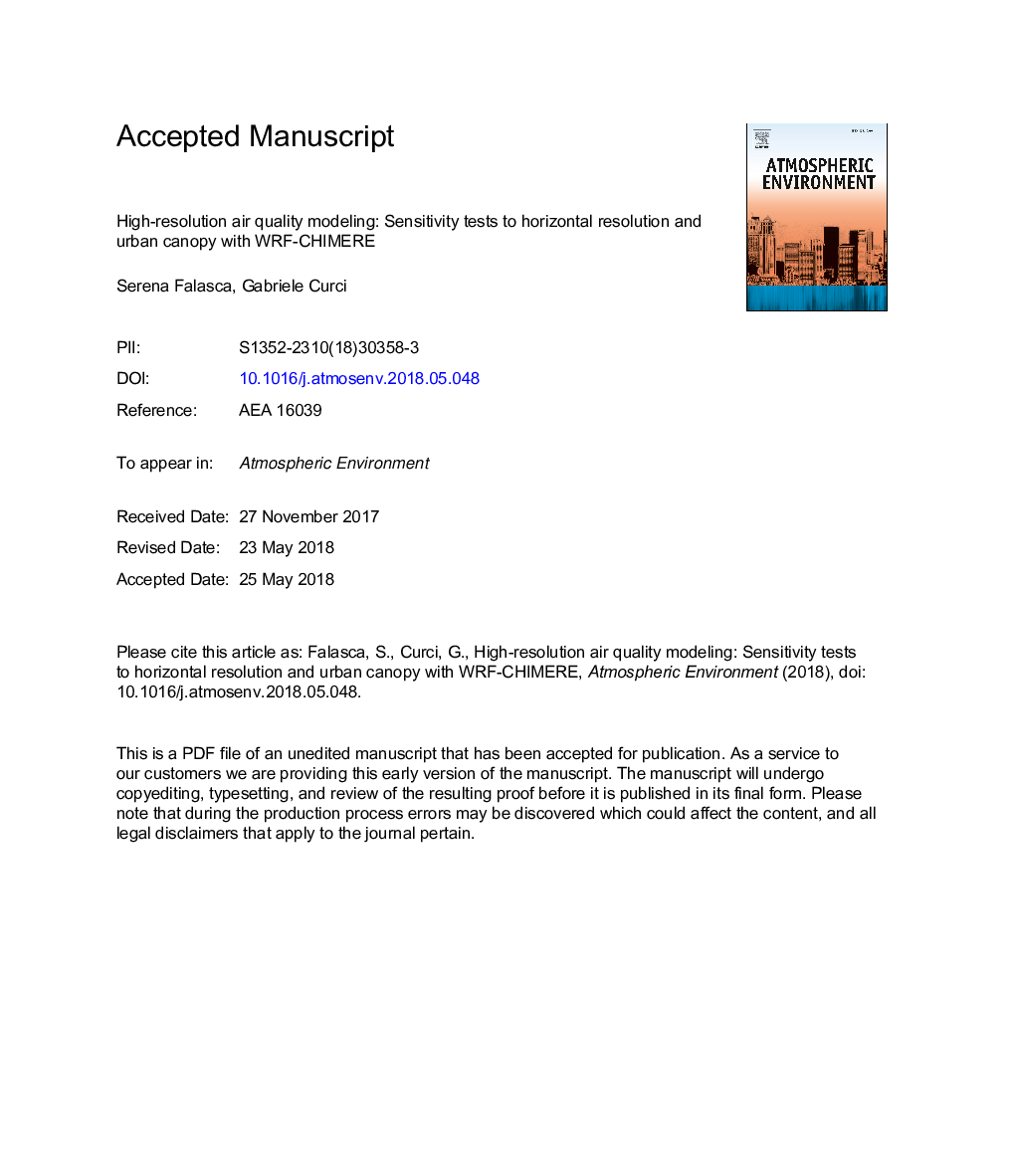| Article ID | Journal | Published Year | Pages | File Type |
|---|---|---|---|---|
| 8863624 | Atmospheric Environment | 2018 | 24 Pages |
Abstract
The European Directive (2008/50/EC) encourages the use of models in the assessment and forecasting of air quality, and assigns them a supporting or replacing role with respect to fixed ground-based measurements. A thorough knowledge of performance of the modeling tools over urban areas is therefore required. In this study, we analyze sensitivity tests with the WRF-CHIMERE modeling system in order to investigate the effect of (1) the horizontal model grid size, (2) the resolution of the anthropogenic emission inventory, and (3) the introduction of urban canopy models. The work focuses on L'Aquila and Milan, two Italian cities widely differing for the number of inhabitants, the extension and the geographical location. We found a clear advantage in increasing the model resolution up to â¼4â¯km, but a further increase at â¼1â¯km resolution does not seem to be justified. Moreover, we found that the ozone simulation is generally degraded at higher resolution. The introduction of a more detailed treatment of the urban canopy and of the anthropogenic emissions suggests the potential for further improvement, but this requires a fine tuning on the area of application. For example, the Building Environment Parameterization corrects the surface wind speed daily cycle, but it also increases the planetary boundary layer height, resulting in excessive dilution of primary pollutants. The anthropogenic emissions should be refined proportionally to the increase in dynamic model resolution, possibly through new bottom-up inventories, rather than through a downscaling of a coarser inventory. We suggest that future work should primarily focus on intensive campaign periods, where a comprehensive observational characterization of the three dimensional structure and evolution of the planetary boundary layer is available.
Related Topics
Physical Sciences and Engineering
Earth and Planetary Sciences
Atmospheric Science
Authors
Serena Falasca, Gabriele Curci,
